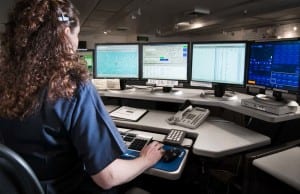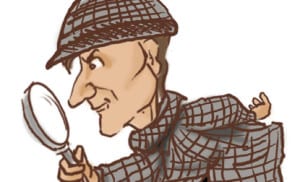
During a recent situational awareness program a participant was discussing something that went wrong at a routine call. As the story went, the crew had been to this address numerous times for the same (or similar) problem. Each time, the issue was resolved quickly and without incident. The call was, by his words, routine. So, when something unexpected happened, the entire crew was caught off-guard and the outcome was nearly catastrophic.
Routines
We develop routines over time. They become our comfortable way of doing things. So comfortable, in fact, that the routine can become automatic.
Once a routine shifts to being automatic, situational awareness can be impacted.[tweet this]
The performance of routines rarely requires a level of vigilance. In your mind you already know what to expect and you already know what you are going to do.
Vigilance

To be vigilant is to be alert, on guard, prepared for the unexpected. This requires a mindset that sets you up to anticipate bad outcomes and to be on-guard for the clues and cues that a potentially bad outcome could be on the horizon.
When vigilance is low, a person simply is not alert to the potential indicators of danger or trouble.[tweet this]
Information Processing
Within your brain there is a system that is designed to alert you to potential dangers. We can be thankful for this. Absent such a system and we may have been extinct as a species long ago. This alerting system warns you of the impending dangers so you can take action to avert tragedy.
Think about the cave dweller who would go out on the hunt, needing to be alert for the signs of danger. The senses were on high alert, gathering information that indicated unsafe conditions. Sometimes those indicators were visual. Some were sounds. Some may have been smells. The brain gathered, processed, comprehended and compared these indicators to past experiences.
The same system exists in your brain. When your vigilance is high, your senses are on alert and gathering information from your environment. This information is then processed and compared to all your life’s experiences. When there is a clue or cue present that indicates danger, you system goes on alert and you prepare yourself physically and mentally for action – action that could save your life.
Chief Gasaway’s Advice
 You’ve probably heard it said before:
You’ve probably heard it said before:
There is no such thing as a routine call.[tweet this]
Saying it and believing it are two very different things, however. If you believe there is no such thing as a routine call then you will approach every call for service with a healthy respect for all the ways things can go wrong.
Your vigilance will be high when expecting the unusual and bizarre become your mindset.[tweet this]
After calls, debrief with your crew. Ask questions. For example, ask: “Did anyone see anything in the kitchen that could have posed a threat to us?” See if a crewmember identifies the steak knife that was sitting there. Or ask: “If we needed to get out of the building in a hurry by a means other than how we entered, what was your planned route?”
As you turn this kind of questioning into a practice, the crew will come to expect it and will, in turn, likely become more vigilant about their surroundings and potential indicators of danger and script out in their minds the actions they would perform if something unexpected happened.
This form of vigilance entails developing all three levels of situational awareness. Strong situational awareness is a process of:
Perception: Using your senses to gather information about what is happening in your environment.
Understanding: Processing and comprehending the meaning of the clues and cues gathered during perception.
Prediction: Using your “mind’s eye” to look into the future and to forecast the potential outcomes before they happen.
Action Items
 1. Discuss a time when you were caught off-guard on a call because you had a belief the call was routine.
1. Discuss a time when you were caught off-guard on a call because you had a belief the call was routine.
2. Discuss personal strategies you have successfully used that help keep you from falling into a comfortable mindset that your call is a routine call.
3. Discuss how a crew can help each other avoid a mindset that a call is routine.
_____________________________________________________
If you are interested in taking your understanding of situational awareness and high-risk decision making to a higher level, check out the Situational Awareness Matters Online Academy.
CLICK HERE for details, enrollment options and pricing.
__________________________________
Share your comments on this article in the “Leave a Reply” box below. If you want to send me incident pictures, videos or have an idea you’d like me to research and write about, contact me. I really enjoy getting feedback and supportive messages from fellow first responders. It gives me the energy to work harder for you.
Thanks,

Email: Support@RichGasaway.com
Phone: 612-548-4424
Facebook Fan Page: www.facebook.com/SAMatters
Twitter: @SAMatters
LinkedIn: Rich Gasaway
YouTube: SAMattersTV
iTunes: SAMatters Radio

